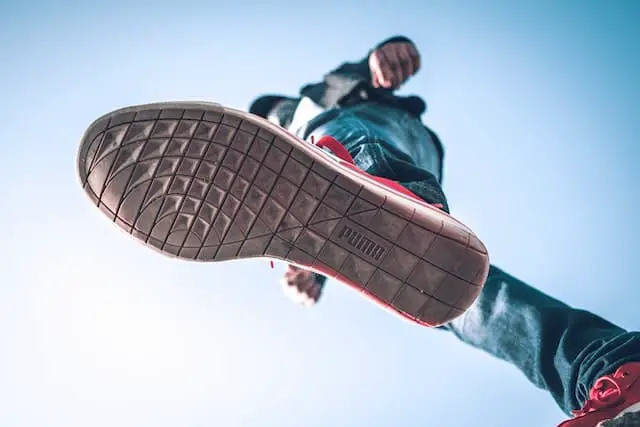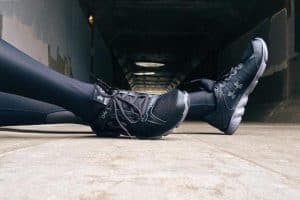Adidas, Nike, and Puma are market share leaders in the sportswear industry. Each company sells products that are similar to those of the others, but there are still key distinctions between them. Sportswear giants Nike and Adidas dominate the market. Perhaps they shouldn’t relax too much, though, because Puma, a German sportswear manufacturer, is making significant strides as of late. This article will help you decide which of the three major sportswear manufacturers, Nike, Adidas, and Puma, fits your needs best. We’ll look at their history, styles, and other characteristics so you can make an informed choice.
Puma vs Adidas vs Nike- Overview
This Puma vs Adidas vs Nike section highlights the company information, styles, and different products sold by the three companies.
Ownership and Headquarters
Puma SE owns the Puma brand, a German multinational corporation headquartered in Herzogenaurach, Bavaria, Germany, that designs and manufactures athletic and casual footwear, apparel, and accessories. After Nike and Adidas, Puma is the world’s third-largest athletic footwear and apparel maker. Nike, Inc. is an American multinational company specializing in creating footwear, equipment, apparel accessories, and services, as well as their worldwide marketing and sales. The corporate headquarters can be found in the Portland metropolitan area, specifically in Beaverton, Oregon. Founded in Herzogenaurach, Bavaria, Germany, Adidas AG is a multinational corporation known for its footwear, apparel, and accessories.’After Nike, it’s the largest producer of sportswear in Europe.
Roots
If there’s one thing the Puma and Adidas teams are used to, it’s rivalry; the companies’ origins are mired in a blood feud. Almost 60 years ago, in the sleepy German town of Herzogenaurach, rival sportswear brands Adidas and Puma were founded by the estranged brothers of Adidas’s namesake, Adi and Rudolf Dassler. In 1964, Bill Bowerman and Philip Knight started a company called Blue Ribbon Sports (BRS), which later changed its name to Nike, Inc.
Market Share and Revenue
While Adidas’s long-standing rivalry was with Puma, the American sportswear giant Nike now poses a much more significant threat to the industry worldwide. Financial reports indicate that as of September 2022, Nike is worth (market cap) $165.85 billion, Adidas $26.85 billion, and PUMA $9.18 billion on the stock market. Nike is the largest at $46.30 billion in revenue, followed by Adidas at $21.74 billion, and Puma at the bottom with $7.91 billion. All three, however, have emerged as the world’s leading sportswear companies.
Employees
Puma had 14,374 employees as of December 31, 2020, up from 14,332 the previous year. By the end of 2022, the company will have nearly 16,000 workers. Nike’s global workforce was 79,100 people as of May 31, 2022. The total number of employees at Adidas AG in 2021 was 61,401, a decrease of 1.42 percent from the previous year. In 2020, Adidas AG had 62,285 workers, an increase of 4.62 percent.
The Puma vs Adidas vs Nike comparison will be incomplete if we don’t discuss the behind these sportswear companies!
Puma History
Here’s everything you need to know about Puma’s history.
Puma Started Small
Puma’s tenacity began on a small scale. Two brothers with an aptitude for shoe design set the ball rolling on this adventure. Dassler Brothers Shoe Factory was started by brothers Rudolf and Adolf Dassler in 1924. The company finally broke through when elite athletes began wearing Dassler spikes and winning medals at the 1936 Olympics. Rudolf Dassler started the Puma company in 1948, and the family business was split down the middle so each brother could benefit. During the same year, Puma debuted its first football boot, The Atom. In 1952, Puma made history by releasing the first football boot with screw-in studs, the Super Atom. Later on, the company upgraded it to what is now known as Brasil. When the Brazilian soccer team wearing Puma shoes won the World Cup in 1958 in Sweden, the brand became famous worldwide.
Puma Logo
Puma’s revolutionary vulcanization (bonding the sole to the shoe shaft) manufacturing process propelled the company to fame in the 1960s. This resulted in a marked improvement in efficiency. In the 1960s, Puma was a huge success, with athletes like Pelé and the Eusebio winning football events and keeping the brand in the spotlight. After Tommie Smith won the gold medal in the 200-meter dash at the 1968 Summer Olympics, he and fellow athlete John Carlos made headlines by raising their fists in a power salute to protest segregation and discrimination against African Americans. Puma’s iconic “jumping cat” logo was created by Lutz Backes, a cartoonist from Nuremberg. The logo debuted internationally in 1967. In 1979, the logo was updated to feature a puma jumping across the “A” in PUMA. This is a hallmark of quality and meticulous craftsmanship on all Puma footwear and apparel.
Innovation at Its Best
Puma became a household name throughout the 1970s, 1980s, and 1990s as athletes who wore the brand’s shoes, apparel, and accessories routinely won championships while competing in them. In 1996, Puma’s innovative marketing strategy was spotlighted when Linford Christie appeared at a press conference sporting contact lenses with a white Puma cat. Throughout the 2000s, Puma put a lot of effort into expanding its selection of football-related goods. Puma’s prominence during this period can also be attributed mainly to Usain Bolt. With the debut of the evoPOWER football boot and cutting-edge football products at the 2014 FIFA World Cup in Brazil, Puma has made a name for itself in the football industry.
Adidas- History
Adidas and Puma have the same roots.
Shoes from the Kitchen?
The roots of Adidas can be traced back to a sleepy town in Bavaria, Germany. Adidas (or “Adidas” as the company spells it) is an acronym for Adolf (“Adi”) Dassler, the company’s founder. Adi Dassler, having begun his business in his mother’s wash kitchen, formally established the ‘Gebrüder Dassler Schuhfabrik’ in 1924. The Dassler family got into the shoe business after WWI. It set out to supply athletes with the finest gear available. The first rewards and landmarks in Adidas’ history were the gold medals won in Amsterdam in 1928 by Lina Radke and Berlin.
Family Feud and Competition to Succeed
Jesse Owens, an American track and field star, wore a pair of shoes rumored to have been a gift from Adi Dassler at the 1936 Olympics in Berlin. As a result of Owens’ medal-winning performances, the Dassler name became more well-known around the world. Adi and his brother Rudolf (“Rudi”) worked hard to restore the Dassler company after the destruction wrought by World War II. However, by 1948, their relationship had broken down irretrievably. Rudi’s half of the company became known as Puma, while Adi’s was renamed Adidas after the business split.
Success and Challenges
As more and more Association Football (football is called soccer in the States) players began wearing Adidas’ lightweight shoes with screw-in cleats in the 1950s, the company grew steadily. In 1963, the company expanded into sports equipment by introducing soccer footballs. It wasn’t until four years later that Adidas started making clothes. Adidas dominated the athletic shoe industry for quite some time, but in the 1970s, newer companies like Nike began to pose serious competition. Adi Dassler died in 1978, and the company’s market share went down in the 1980s, even though it had a special endorsement deal with the rap group Run-D.M.C., whose song “My Adidas” was a big hit (1986). (In 2016, the firm was slated to enter into a partnership with rapper and businessman Kanye West, marking its return to the hip-hop community.
The Birth of Adidas-Salomon AG
Adidas may not have done a great job of getting the word out about their incredible products in the early 1990s, but that didn’t stop them from creating some of their most iconic ideas. For example, in 1991, Adidas introduced a new premium product line called “Adidas Equipment,” and in 1994, they released the Predator football boot. As CEO, one of Robert Louis-most Dreyfus’s most significant moves was to acquire businesses in adjacent markets, allowing the firm to expand into those sectors. In a deal worth 942 million German Marks, Adidas purchased the Salomon Group in 1997. With the addition of Salomon, TaylorMade, Mavic, and Bonfire, the company has expanded its offerings in the snow sports and golf industries. Adidas and Salomon merged to form Adidas-Salomon AG.
Collaborations
Under its new five-year strategy, ‘Creating the New,’ Adidas aims to transform into an open-source business where athletes, consumers, and partners are all integral to building the brand. Since then, cooperation has only gotten closer. Adidas has collaborated with several notable artists and companies, including Pharrell Williams, Kanye West, and Lego, to name a few. Herbert Hainer, Adidas CEO for 15 years, handed over the reins to Kasper Rorsted in October 2016. After working at the top consumer goods company Henkel, Kasper joined the Adidas Group and began a transformation to propel the company’s success in the digital era.
Nike- History
Nike was founded as Blue Ribbon Sports (RBS) in 1964 by Bill Bowerman, the University of Oregon track and field coach, and Phil Knight, a former student of Bowerman’s.
Coach and Student Brace for Success
Bill Bowerman wanted to find ways to help his student succeed, so he worked on improving their footwear in his spare time. Numerous permutations were attempted, but none proved fruitful. Phil Knight earned an MBA in finance from Stanford and wrote a paper proposing that Japanese shoe manufacturing take on established German labels.
Rebranding as Nike
Since they had already made a name for themselves in the industry, they decided to try making shoes under their label. In 1971, after much trial and error, they developed a pair of training shoes that were both lighter and more comfortable than their predecessors. These shoes featured a waffle-style outsole for enhanced traction. The 1972 U.S. Track & Field Trials was the first major competition to feature their new training shoes. During his college career from 1969 to 1972, Steve Prefontaine broke seven American records ranging from 2,000 meters to 10,000 meters, making him the company’s first official spokesman. The Nike Air system debuted in 1979. This helped solidify their position as a formidable foe of the existing competition. Nike’s rapid expansion during this period made the company go public in 1980. Prompt brand recognition among fitness fanatics followed. They started making athletic and training shoes in 1972. And by 1982, they were the largest manufacturer in the United States.
Just Do It
The “Swoosh” logo and “Just Do It” slogan associated with Nike have become household names in many American homes. Nike’s sales soared in the wake of NBA rookie Michael Jordan’s meteoric rise to fame in the mid-1980s when the company created Jordan-branded footwear bearing the athlete’s name. A short time later, Nike began producing clothing and other gear aimed at enhancing the effectiveness of cross-training. The Brazilian football team and the men’s and women’s national soccer teams from the United States were among the many international squads they signed. They did it again in 1996 when they signed Tiger Woods, a golfing rookie, for $5 million annually. What happened after that is, well, history.
Acquisitions
From the late 1980s onward, Nike steadily grew its business and diversified its product line through acquisitions. These included footwear manufacturers Cole Haan (1988; sold in 2012) and Converse, Inc. (2003), sports equipment manufacturer Canstar Sports, Inc. (1994; later called Bauer and sold in 2008), and athletic apparel and equipment manufacturer Umbro (1995; sold in 2008). (2008; sold in 2012). Nike ACG (short for “all-conditions gear”) was launched in 1996 to cater to the growing demand for high-performance apparel and footwear for extreme sports like snowboarding and mountain biking. A portable heart rate monitor and a high-altitude wrist compass are just two examples of the sports technology accessories that Nike began selling in the early 21st century.
Collaborations with Celebrities
Michael Jordan, Mia Hamm, Roger Federer, and Tiger Woods helped Nike immensely by endorsing the brand. The NikeTown retail chain debuted in 1990 and honored these and other Nike spokespeople while providing customers access to the company’s entire product line. The company’s reputation hit in the 1990s after reports surfaced about unsafe conditions in its overseas factories.
Notable CEOs
Midway through 2015, Phil Knight announced that he would leave his position as Nike’s chairman the following year. On June 30, 2016, he formally resigned from his position at the company. CEO Mark Parker announced Trevor Edwards’ retirement as Nike brand president in a public statement on March 15, 2018. Edwards was widely regarded as a potential successor to Parker. On January 13, 2020, John Donahoe took over as CEO after being named to the position in October 2019. To strengthen its connections with customers, the company decided to stop selling through Amazon in November 2019.
Closing Thoughts
We hope this Puma vs Adidas vs Nike article helped determine which brand is best for you. The competition among the three brands doesn’t end anytime soon!







